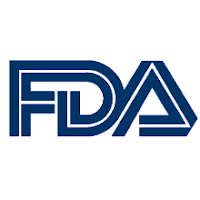FDA Approves New Botox Black Box Warning, Drug Name Changes
 The FDA has signed off on a new “black box” warning for Botox and other botulinum toxic drug products, and has approved generic name changes to avoid potential pharmacy errors that could result in life-threatening injuries.
The FDA has signed off on a new “black box” warning for Botox and other botulinum toxic drug products, and has approved generic name changes to avoid potential pharmacy errors that could result in life-threatening injuries.New black box warnings and medication guides were announced on August 3 for Botox, Botox Cosmetic, Myobloc and Dysport, which was recently approved in April 2009.
The stronger warnings were first ordered in April due to the risk that Botox side effects could cause potentially life-threatening problems similar to botulism if the products spread from the area of injection to other parts of the body. Most of these Botox problems have occurred when the injections are given off-label, particularly for treatment of muscle spasticity in children with cerebral palsy.
The drugs contain small quantities of the botulinum toxin, which is the bacteria associated with the development of botulism, a muscle paralyzing conditon.
To avoid confusion for doctors and pharmacies, the FDA also approved generic name changes for the three products. Botox and Botox Cosmetic, manufactured by Allergan, have changed their generic names from Botulinum Toxin Type A to onabotulinumtoxinA. Myobloc, manufactured by Solstice Neurosciences, has changed its generic name from Botulinum Toxin Type B to rimabotulinumtoxinB. The recently approved Dysport maintains the generic name abobotulinumtoxinA.
Although Botox is the most commonly known of the products for its cosmetic uses to remove wrinkles, the drugs are also approved to treat a variety of conditions, such as crossed eyes, excess sweating, involuntary blinking of the eye, contractions of neck and shoulder muscles and cervical dystonia.
The FDA issued a public health warning in February 2009 about the potential risk of serious injury or death from Botox, particularly among children with cerebral palsy who are often given much larger doses off-label. Although the FDA has not approved such uses, many disabled children have been given the injections, as the toxin prevents muscles from involuntarily contracting, helping to alleviate stiff, jerky and difficult movements commonly associated with cerebral palsy.
According to a 2008 report released by the consumer advocacy group Public Citizen, at least 180 adverse event reports have been received by the FDA, which revealed that patients treated with Botox or Myobloc showed symptoms such as aspiration pneumonia, difficulty swallowing or muscle weakness. As the toxin spreads from the injection site, it has been associated with symptoms like weakness, blurred vision, drooping eyelids, slurred speech, dry mouth, partial paralysis, respiratory distress and death.
No definitive serious reports of distant spread of the toxin have been associated with dermatologic use of Botox or Botox Cosmetic at the recommended doses, according to the FDA. In addition, no reports have been associated with Botox when used at approved doses for eyelid twitches or crossed eyes.
Several Botox lawsuits have been filed against Allergan, Inc. on behalf of people who allege that severe or fatal injuries were caused by treatments used for a variety of purposes. It has been alleged that Allergan actively promoted Botox for uses that were not approved by the FDA and failed to warn about the potential risks.
Source : www.aboutlawsuits.com














Post a Comment